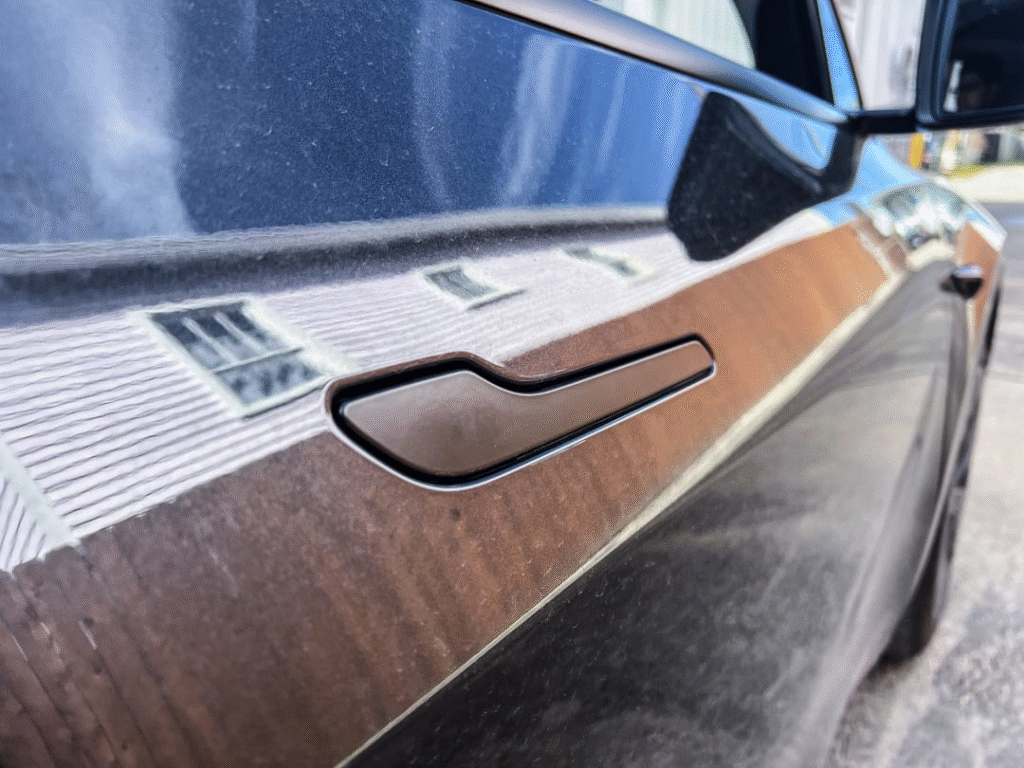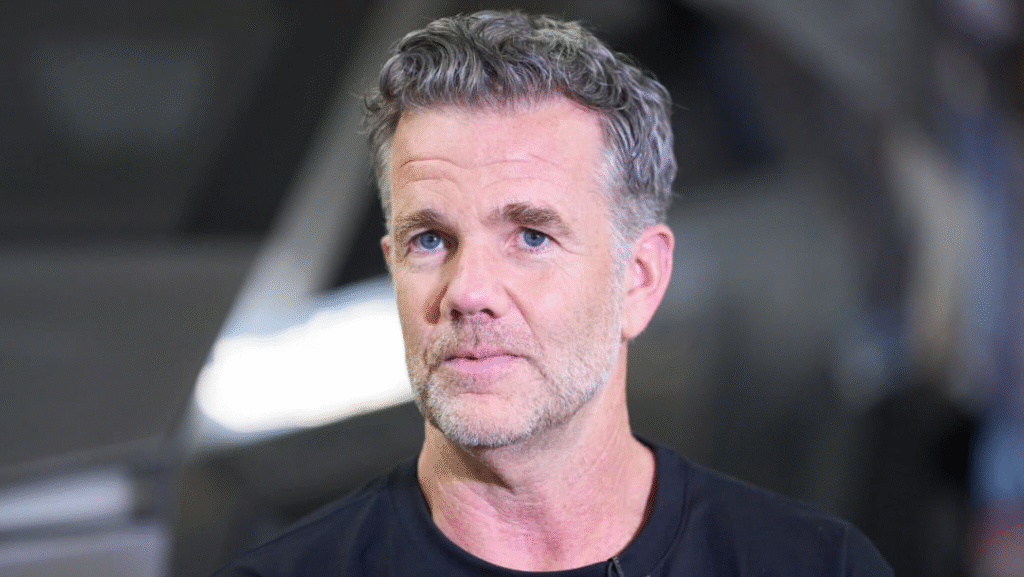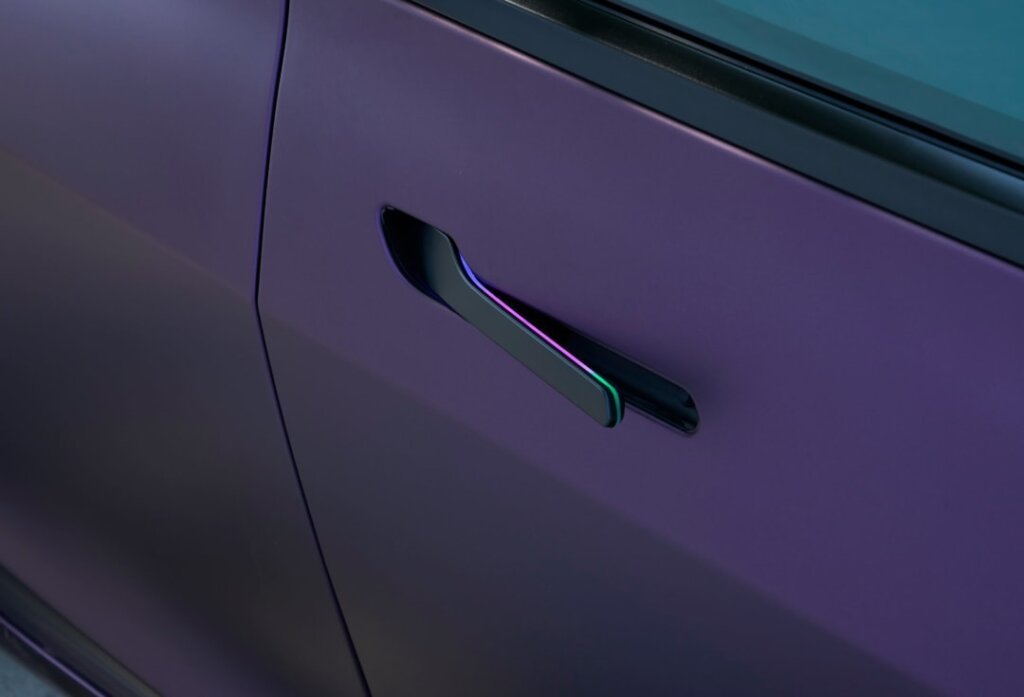Tesla’s Iconic Flush Door Handles Face Regulatory Threat Over Safety: Global Redesign Possible
Tesla‘s iconic flush, retractable door handles, a cornerstone of the brand’s minimalist design, are facing intense scrutiny from regulators in the U.S. and abroad. Concerns are mounting over their accessibility during power loss or crash events, potentially forcing Tesla to undertake complex redesigns. The National Highway Traffic Safety Administration (NHTSA) is currently investigating 174,000 Model Y vehicles due to over 140 reports of handle malfunctions, including instances where owners were trapped. With China also considering new rules that could ban or restrict fully flush handles without mechanical backups, Tesla may be compelled to implement a global redesign, affecting internal door structures, wiring, and crash safety protocols, highlighting the tension between the automaker’s design philosophy and evolving safety standards.

Safety Concerns Drive Regulatory Scrutiny
The core issue revolves around the electronic nature of Tesla’s door handles and their potential failure points in emergencies.
- Electronic Dependence: Tesla’s handles rely heavily on electronic operation, which can be compromised during a battery failure or a crash.
- NHTSA Investigation: The NHTSA is actively investigating approximately 174,000 Model Y vehicles after receiving over 140 complaints about door handle malfunctions.
- Emergency Exits: Owners have reported being unable to exit their vehicles after battery death, sometimes resorting to breaking windows to escape. Concerns are particularly high for children or passengers unfamiliar with the hidden manual release mechanism.
- China’s Role: China’s regulators are also considering new safety rules that could prohibit or restrict fully flush handles unless they incorporate accessible mechanical backups. Given Tesla’s significant presence in the Chinese market, such a regulation could necessitate a global redesign.
Why a Redesign is a “Big Deal”
Modifying the door handles is far more complex than it appears, impacting core design and engineering.
- Integrated Design: Tesla’s entire door system, including internal structures, wiring, sensors, and aerodynamics, is meticulously designed around the electronic flush handles.
- Complex Redundancies: Adding mechanical redundancies would require:
- Reshaping internal door structures.
- Rewiring control systems.
- Retesting crash safety protocols.
- Tension Between Innovation and Practicality: This challenge highlights the ongoing conflict between Tesla’s drive for technological innovation and the real-world demands of safety and practicality, a recurring theme evident in past FSD investigations and safety recalls.
- Potential Solutions: Tesla design chief Franz von Holzhausen has reportedly indicated that the company is exploring an integrated system combining both mechanical and electronic releases, aiming to preserve the flush aesthetic while ensuring emergency accessibility. This could debut on future models or be rolled out to the existing lineup.

Broader Quality and Usability Challenges
The door handle issue adds to a series of hardware and user interface controversies for Tesla.
- Hardware Flaws: Recent issues, such as a recall to fix a “simple lighting fault,” suggest that even basic systems can suffer from overlooked testing or software integration, chipping away at Tesla’s reputation for “flawless minimalism.”
- UI Debate: Tesla’s removal of traditional physical controls in favor of gesture-based systems (e.g., gesture-based turn signals) has sparked debate and even “outrage” among owners, sometimes leading to paid “fixes.”
- Regulatory Catch-Up: These examples underscore a growing trend: regulators are increasingly intervening when technological innovation outpaces established safety and usability standards.

Why It Matters: Elegance, Accessibility, and Global Standards
The outcome of this regulatory scrutiny could have profound implications for Tesla and the wider auto industry.
- Industry Influence: Tesla’s clean design philosophy has influenced the entire automotive industry, but global safety rules are catching up.
- Extensive Re-engineering: If new global standards mandate mechanical releases for every door, Tesla might need to re-engineer not just the handles, but entire body panels and internal wiring layouts, incurring significant costs and development time.
- Future Breakthrough: For Tesla, the next major design breakthrough might not be in speed or range, but in creating a “smarter door handle” that elegantly integrates both aesthetic appeal and uncompromising emergency accessibility, proving that “elegance and accessibility can coexist.”
Also Read – Alfa Romeo Recalls Over 62,000 Giulias & Stelvios for Faulty Rearview Cameras, Second Major Issue in a Month




Pingback: Nissan Recalls 45,000 Leaf EVs, Warns Owners To Stop Fast Charging Due To Fire Risk - Mechhelp